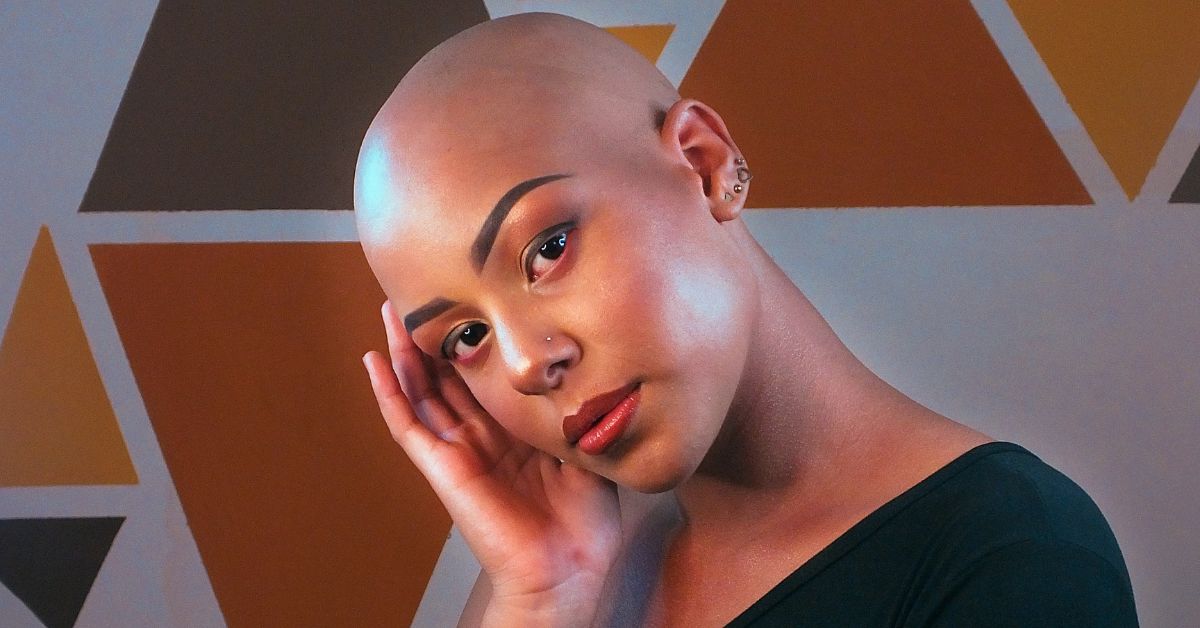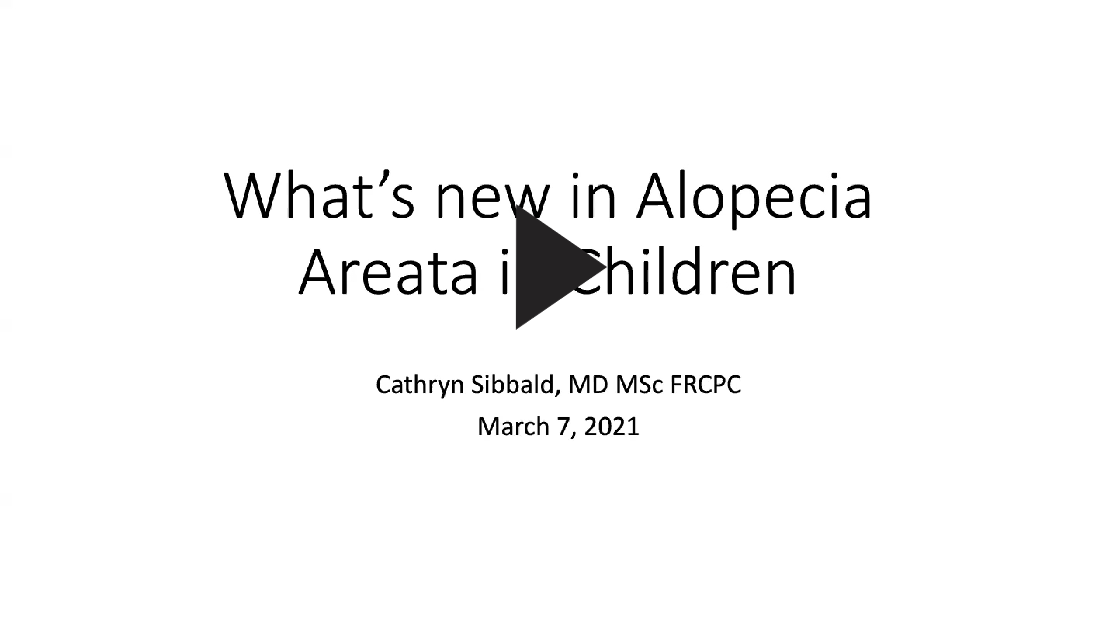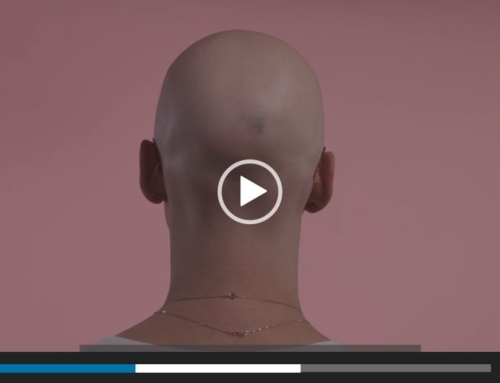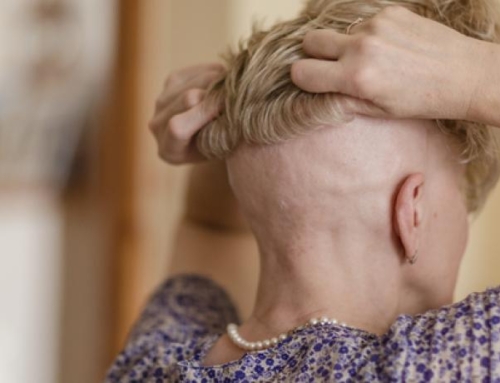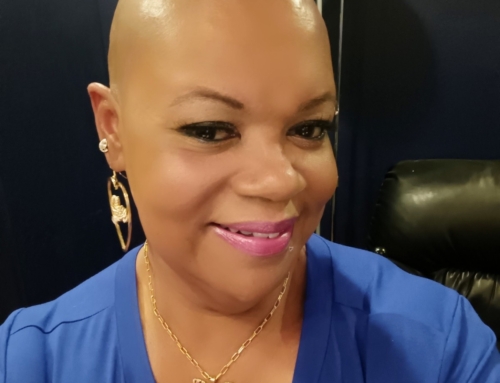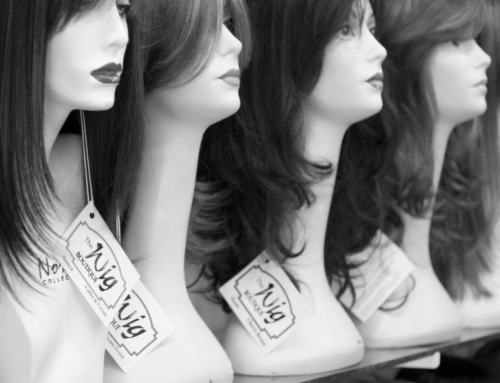Alopecia Areata (AA) is an autoimmune disease that causes hair loss. Alopecia Areata can present itself in many ways, such as causing patchy hair loss, loss of eyebrows and eyelashes, loss of beard hair in men, and more. Two of the most uncommon subtypes are Alopecia Totalis (AT) and Alopecia Universalis (AU). Current research suggests that between 14-25% of people with AA develop one of these two subtypes. But what is the difference between Alopecia Universalis and Alopecia Totalis? How do you know if you have one or the other and how are they treated?
Alopecia Universalis vs. Alopecia Totalis
AU presents as total loss of hair on the body, including hair on the scalp, eyelashes, eyebrows, and all other body hair. This is considered the most advanced subtype of Alopecia Areata. In contrast, Alopecia Totalis is defined as total loss of hair on the scalp.
When you have AU:
- All hair on the body is affected, including eyebrows, eyelashes, and other body hair
- You have an uncommon subtype of AA, affecting approximately 0.03% of the population
- No exclamation point hairs are present since all hair is lost
When you have AT:
- You don’t lose eyebrow, eyelash, and other body hair
- You have a uncommon subtype AA, affecting approximately 0.08% of the population
- Exclamation point hairs may be visible around the areas of hair loss
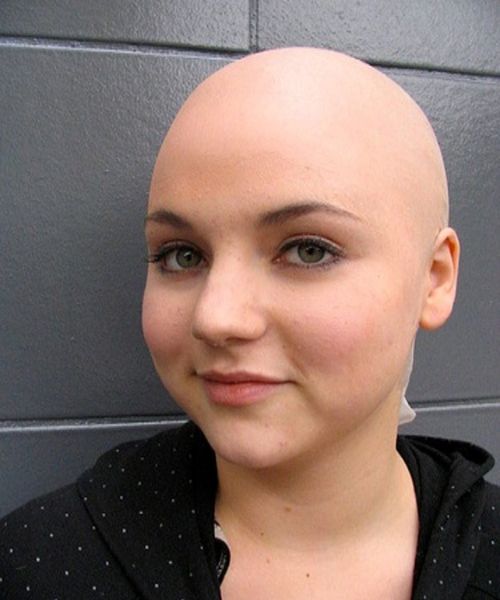
Alopecia Totalis
causes total hair loss on the scalp, but does not affect the eyelashes and eyebrows.
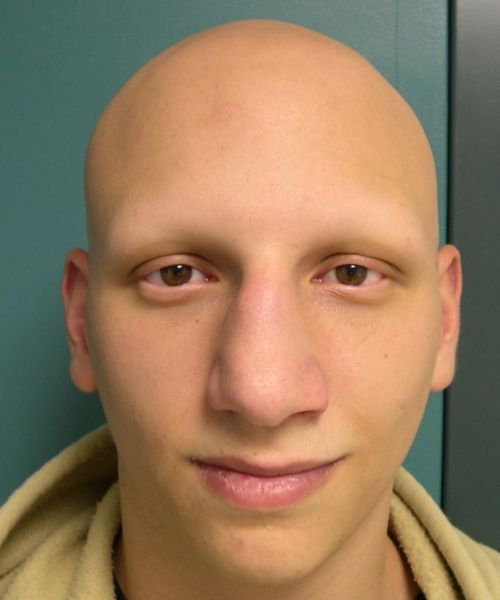
Alopecia Universalis
causes complete hair loss on the body. This includes scalp hair, eyelashes, and eyebrows.
Treating Alopecia Universalis vs. Alopecia Totalis
There is currently no cure for Alopecia Areata but there are a variety of treatment options. What course of treatment your dermatologist recommends will be dependent on what subtype of Alopecia Areata you have. For adults with AU, common treatment options include:
- topical immunotherapy such as diphencyprone (DPCP) or squaric acid (SADBE)
- corticosteroids (topical steroids, steroid injections, prednisone, clobetasol)
- topical or oral minoxidil
- immunosuppressive medications (methotrexate, cyclosporine)
- JAK inhibitors (baricitinib, tofacitinib, ruxolitinib)
- photodynamic therapy
For children, treatment options are less extensive. Whether a specific treatment is suitable for a child is left to the discretion of the dermatologist, and the comfort level of the parents and child. Treatments for children include:
- topical corticosteroids (clobetasol)
- topical immunotherapy (DPCP or SADBE)
- steroid injections (if tolerated)
- topical minoxidil
Now you are familiar with some of the treatment options for AU, how about Alopecia Totalis? This subtype is also treated using the same treatment types listed above. The difference is, treatments for AT are focused on regrowing the hair lost on the scalp, whereas treating AU requires targeting hair follicles on the entire body. In both cases, the effectiveness of these treatment types can vary depending on the person and may be long term to ensure hair continues to grow.
Dr. Cathryn Sibbald presents What’s New in Alopecia Areata in Children and discusses current treatments for children and adults with Alopecia Areata
Difference between Alopecia Universalis and Alopecia Totalis
The major difference between Alopecia Universalis and Alopecia Totalis is the amount of hair lost on the body and the areas of the body affected. AU is the stage which every hair on the body falls out. AT is complete hair loss on the scalp only.
Learn more:

